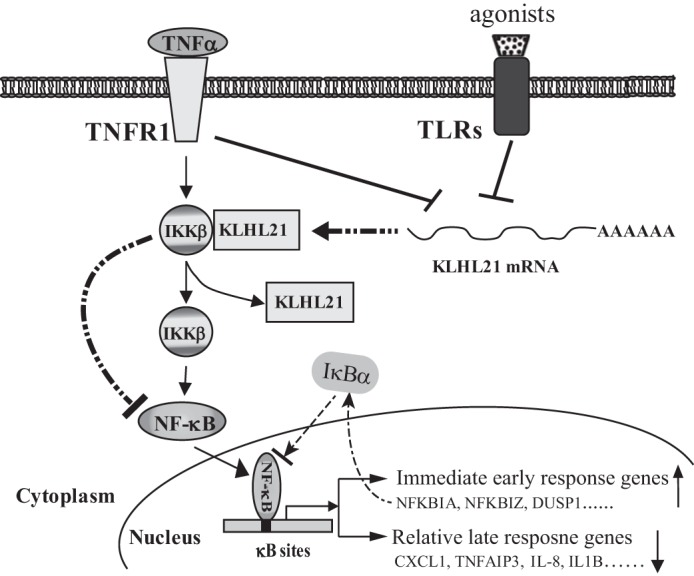FIGURE 9.

Proposed model illustrating how KLHL21 modulates the NF-κB signaling pathway via targeting IKKβ. In resting cells, KLHL21 protein specifically binds to IKKβ and inhibits its activation, which leads to the suppression of NF-κB signaling. Their interaction is gradually attenuated in response to TNFα treatment, which leads to the release of IKKβ and the activation of the NF-κB signaling pathway. This results in the up-regulation of those immediate early response genes, including NFKBIA (encoding IκBα). Up-regulation of IκBα leads to the termination of NF-κB signaling and down-regulation of its relative late phase target genes, such as CXCL1, IL-8, and IL-1B. Furthermore, the expression of KLHL21 is rapidly down-regulated in macrophages upon extracellular proinflammatory stimuli treatment, which also releases its inhibitory effects on IKKβ activation.
